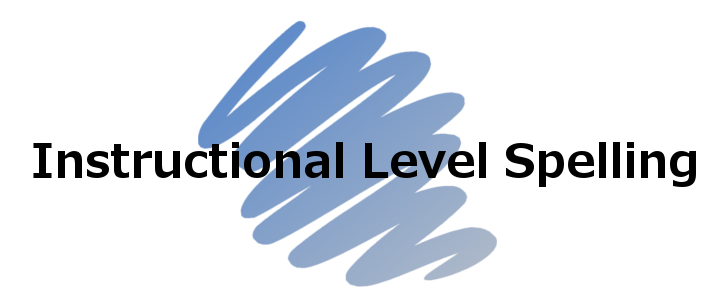The White Level - For Beginning Readers and Writers
The White Level of the Instructional Level Spelling Program is designed for use with beginning readers and writers who are developing a phonetic strategy for spelling and are ready to start formal word study. Children explore and practice the spelling of one syllable words with short vowels (CVC, CCVC, CVCC, CCVCC patterns), long vowels (VCe pattern), and high frequency words for writing. The White Level materials are designed to function as a framework around which teachers develop a spelling/word study program to meet the needs of their students.
The essence of a beginning spelling/word study program is active involvement in appropriate activities. The 20 Word Lists provide a comprehensive array of word families at the foundational level. The White Level activities are intentionally designed routines that focus on word structure and the accurate spelling of words. The routines draw from the developmental approach to word study and the multisensory approach to encoding. These routines enable children to internalize a process for examining words and develop the habit of attention to spelling while writing words. These five routines include 1) Creating Word Families, 2) Sorting Words, 3) Dictation Practice – Words, 4) Dictation Practice - Sentences, and 5) Links for High Frequency Words.
The White Level Inventory can be used to assess single word spelling skills before and after White Level work. Formal weekly assessment of specific words lists is not advised for beginning writers. Rather, there should be a focus on accuracy in dictation practice with additional informal spelling checks.
WHITE LEVEL WORD LISTS
Short Vowel Lists (1 - 7) include words from four different word families (1 CVC word and 1 CCVC word from each family) and List 8 includes words from five different word families. Some Short Vowel lists focus on one short vowel sound; other lists provide opportunities to contrast short vowel word families. Short Vowels are introduced in the following order: A, O, I, U and E, introducing beginning writers to the most easily distinguished short vowel sounds first.
High Frequency Lists (9 – 11) include words with irregular spellings that young children use often in their writing. These words are challenging as the child cannot predict the spelling based on what is known about sound-symbol relationships and phonetic patterns. With multisensory memory links, repeated opportunities for practice, and an increasing expectation for attention to the spelling of these words, accurate spellings do emerge.
Long Vowel Lists (12 – 15) serve as an introduction to the Vowel-Consonant-e (VCe) spelling pattern. Five word families are presented for Long A, Long I, and Long O (1 CVCe word and 1 CCVCe word for each family). List 15 is a Mixed VCe list for contrasts and includes CVCe, CCVCe, and CCCvCe words, each from a different word family.
Endings Lists (16-20) focus on one syllable short vowel words with blends and digraphs at the end in a mix of 10 CVCC, CCVCC, and CCCVCC words.
WHITE LEVEL LESSON AND PRACTICE ROUTINES
Creating Word Families is the lesson routine in which you introduce the children to a multitude of word spellings. Word families are groups of rhyming words that are spelled with the same ending. This lesson starts off each unit of study.
Sorting Words is a routine that supports the child’s understanding of the English spelling system. Word sorts engage the child in a hands-on examination of word patterns and the opportunity to draw conclusions about how spelling works at their instructional level.
Dictation Practice – Words is a way for children to practice spelling to mastery. The focus is on recording the letters that represent each sound in word in the exact order.
Dictation Practice – Sentences serves as a bridge from writing words in isolation to writing words in personal writing. This routine focuses on the development of auditory attention, auditory sequential memory, and fine motor skills in addition to spelling.
Links for High Frequency Words are lessons and practice in creating mental images that support the retention of high frequency word spellings. Memory for irregular spellings is developed through meaning links and multisensory practice drawn from Orton-Gillingham strategies.
Teachers can choose and use the White Level Word Lists and Routines that are the best fit for their program and their students. Once children have mastered foundational spelling skills, they can move on to higher levels of the Instructional Level Spelling and explore the structure of the English spelling system as they develop increasing proficiency in spelling!
